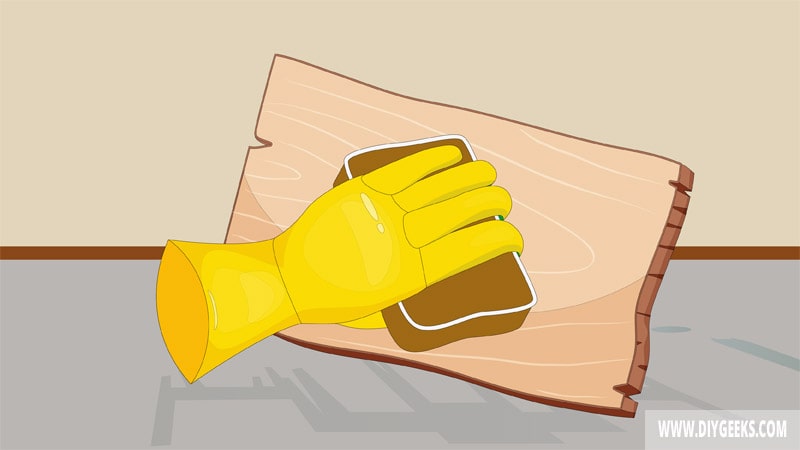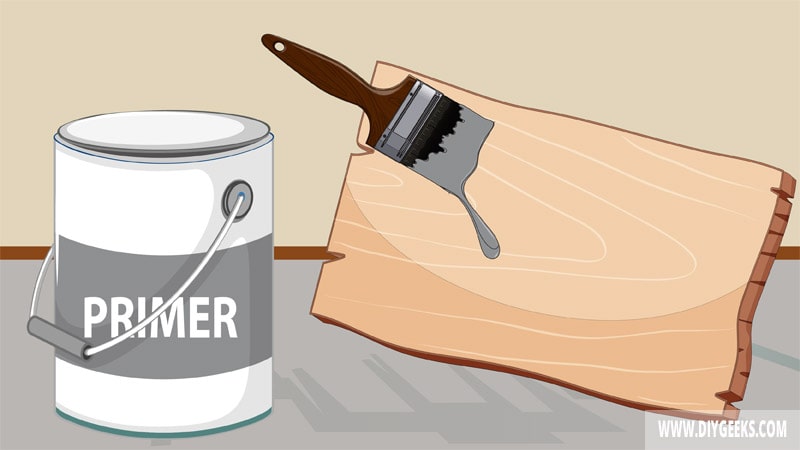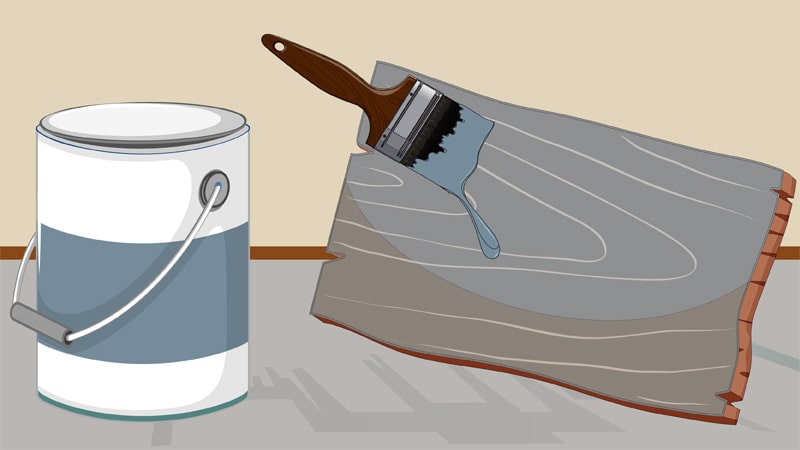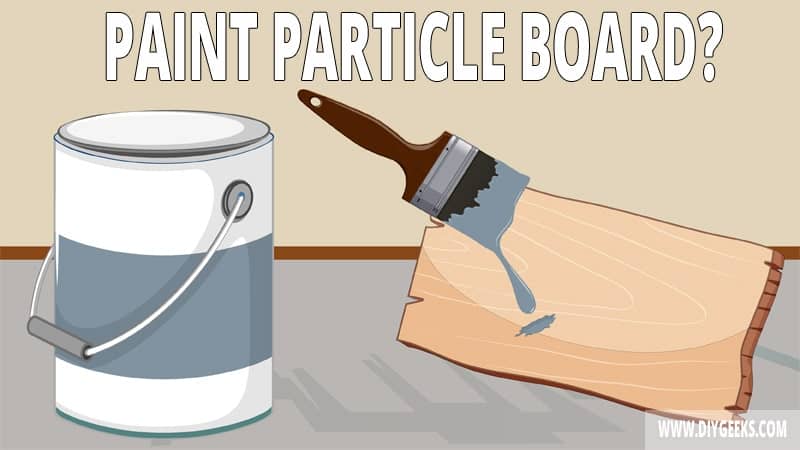Particle board (known as chipboard) is an engineered wood made by mixing wood particles or fiber with glue under pressure. It’s a porous material that can over-absorb paint.
To paint particle board, sand the surface, apply primer, and apply paint.
You must sand and apply primer before painting the particle board. Sanding creates a rough texture over the surface to improve the paint adhesion, while a primer covers the surface pores and prevents over-absorption.
Can You Paint Over a Particle Board?
You can paint over a particle board, but you must sand and prime it to enhance proper paint penetration and adhesion.
Sanding creates a rough texture over the particle board, helping the paint penetrate and adhere better. Primer creates a textured layer, seals the surface pores to prevent over-absorption, and helps the paint to adhere better.
A particle board is an engineered wood made of wood particles glued together under pressure. It’s a porous material because of the small spaces between the wood particles.
The paint coating won’t adhere properly, the finish won’t be even and it can peel off if you don’t sand or prime the particle board before painting.
Which Paint Types To Use Over Particle Boards?
Use oil-based paint over particle boards as it has a thicker viscosity and offers more protection and durability. Oil-based paint seals the surface pores better and doesn’t create an uneven or blotchy finish.
Water-based paint uses water as its solvent and can swell the particle board if you apply too much of it. The paint also doesn’t protect the surface from moisture, water, or scratches without a sealer, and isn’t thick enough to seal surface pores properly.
Use stain-blocking oil-based primer for particle board as it covers the surface pores and creates a texture layer for the new paint to adhere to. Avoid using water-based primers.
How to Paint Particle Board?
To paint particle board, do the following things.
- Sand the Surface.
- Apply Primer.
- Apply Paint.
The tools you need for this project are listed below.
- Fine-grit sandpaper
- Oil-based or solvent-based primer
- A portable vacuum or duster
- Paintbrushes
- A screwdriver
- Wood Sealer
1. Sand the Surface

Sand the particle board with fine-grit sandpaper (220-grit) to create a rough texture over it to improve paint penetration and adhesion, and remove dust, dirt, and debris.
Don’t sand the particle board too much as you can damage it because it’s made of wood fibers and glue that are easily removed.
If the board is already painted or factory-sealed, use medium-grit sandpaper (100-grit) to remove the previous finish.
Ensure to clean the surface and remove dust after sanding.
2. Apply Primer

Apply 1 stain-blocking oil-based primer coat over the particle board to seal the surface pores and prevent paint over-absorption. The primer also creates a textured layer for the new paint to penetrate and adhere better.
Since the particle board is a porous material it can absorb too much paint in one spot and less in another spot, creating a blotchy finish. So, you must apply a primer coating to seal its pores before painting.
3. Apply The Paint

Apply 2-3 oil-based paint coats over the particle board. Wait until one coat dries before applying the next one.
Seal the paint finish with a wood sealer to protect the surface from moisture, water, scratches, and other damage.
How Long Does Paint Last on Particle Board?
Paint lasts between 5-10 years on a particle board, depending on the paint type, where the board is placed, and whether you apply a wood sealer.
For instance, oil-based paint lasts longer than water-based paint because it has a glossy finish that prevents minimal water penetration.
The paint finish lasts less if the particle board material is placed outdoors because the outdoor weather elements can damage and remove it.
The paint lasts longer if you apply a moisture-resistant wood sealer over it. The wood sealer produces a glossy moisture-resistant coating that protects the underlying paint and surface from moisture, water, scratches, and outdoor weather elements.
The cleaning and maintenance routine also determines how long the paint will last. If the paint is frequently wiped and maintained, it will last longer. But, if you leave the paint to accumulate dust and stains without cleaning, the paint will get stained and wear off.


